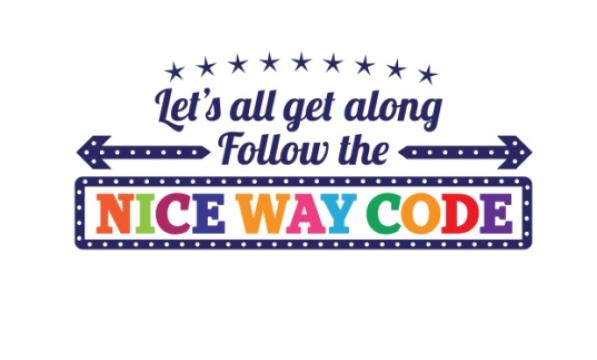Error message
Could not retrieve the oEmbed resource.'Nice Way Code' launched to build better relations on the roads

The campaign is run by Cycling Scotland on behalf of the Scottish Government.
Ian Aitken, chief executive of Cycling Scotland, said: "Road safety is everyone’s responsibility and it is important we move away from the ‘us and them’ mentality of some drivers, cyclists and pedestrians when in fact almost everybody falls into at least two of those categories."
The campaign includes messages aimed at all road users. Messages to drivers include the need to give cyclists more space when overtaking. Although Rule 163 of the Highway Code states that drivers should "give cyclists...as much room as you would when overtaking a car", many cyclists feel that this is seldom followed.
Similarly, the Highway Code advises drivers to be extra careful at junctions, watching out for cyclists and giving way to pedestrians crossing at side roads. Three quarters of cycle casualties occur at junctions. Following the Highway Code more closely would improve safety for all road users, but also help make our roads more collaborative, less aggressive, places.
The Nice Way Code campaign is endorsed by a broad coalition of road user groups, including CTC. We acknowledge the need to promote responsible behaviour by by all road users, and the pressures on politicians to show visible support for this aim. However we would prefer to see the Scottish Government focusing its cycle safety awareness campaigns on the real causes of road danger, namely bad driving and poor road design.
The Nice Way Code campaign seeks to build a culture of tolerance and patience between cyclists, motorists, pedestrians and all other road users across Scotland.
Keith Brown MSP
Transport Minister
Messages to cyclists include the usual pleas not to ride on pavements or through red lights - even though CTC's research has shown that this is a miniscule safety problem compared to the dangers presented (often from the same behaviour) by motorists.
The Nice Way Code will use TV advertising and billboards to communicate the messages in a humorous way, while using the strapline 'Let’s All Get Along. Follow the Nice Way Code.’
The project will run alongside enforcement activity carried out by the police and infrastructure improvements to the cycling network by local authorities and Transport Scotland. CTC has previously pointed out that some of the illegal cycling behaviour is because users feel endangered on the road, leading to them riding on pavements instead.
Our members feel that the Highway Code is ignored by many drivers. This campaign will help communicate how all road users should behave, improve safety and should reduce the 'us and them' attitude that undermines attempts to get more people cycling.
Gordon Seabright
CTC Chief Executive
CTC is keen for Cycling Scotland's budget to be increased to enable better quality cycling infrastructure to be constructed. Although driver behaviour is a major barrier to getting more people cycling, sharing roads with large volumes of high speed traffic is an even greater problem for most people, and is the biggest reason why fewer than one in three people ride a bike in Scotland.
Currently, spending on cycling is just £3.80 per person per year in Scotland, yet evidence from Europe suggests that in order to substantially increase cycling levels, this needs to be much higher - at least £10 per head.
The Cycling Action Plan for Scotland was recently relaunched, retaining the target of making 10% of trips by bike by 2020. CTC criticised the lack of any commitment to increase funding.
The first two short films used for the Nice Way Code Campaign can be viewed below.
The implication that cyclists are the only road user that runs red lights is completely contrary to the evidence, compiled by CTC, which shows that - in London (where good data is available) 5 pedestrians are injured by red light jumping per year, whereas a further 105 are injured by red light jumping drivers.
This video helps to communicate the message that much greater care must be taken when overtaking cyclists. Close, fast overtaking severely makes cycling feel unsafe. However, neither of these activities (cyclists going through red lights or close overtaking) are major sources of risk or danger: rather they are related to attitudes and perceptions of safety.
Analysis of 142 cyclists' deaths found that only 3 were linked to a vehicle passing too close and 4 involves the cyclists failing to stop at a junction (including red light violations. However, another 13 (9% of the total) involved a 'cyclists moving into the path of an overtaking vehicle', which may have not happened if the driver was giving adequate room when overtaking.
By far and away the biggest sources of danger to cyclists are inattention from drivers turning in urban areas and drivers hitting cyclists from behind (ie, making no attempt to overtake) in rural areas. An advertising campaign will do little to reduce these sorts of risks, but can help - slightly - to reduce friction and improve understanding between road users or each others' needs.

